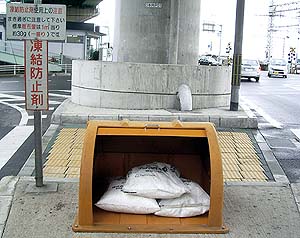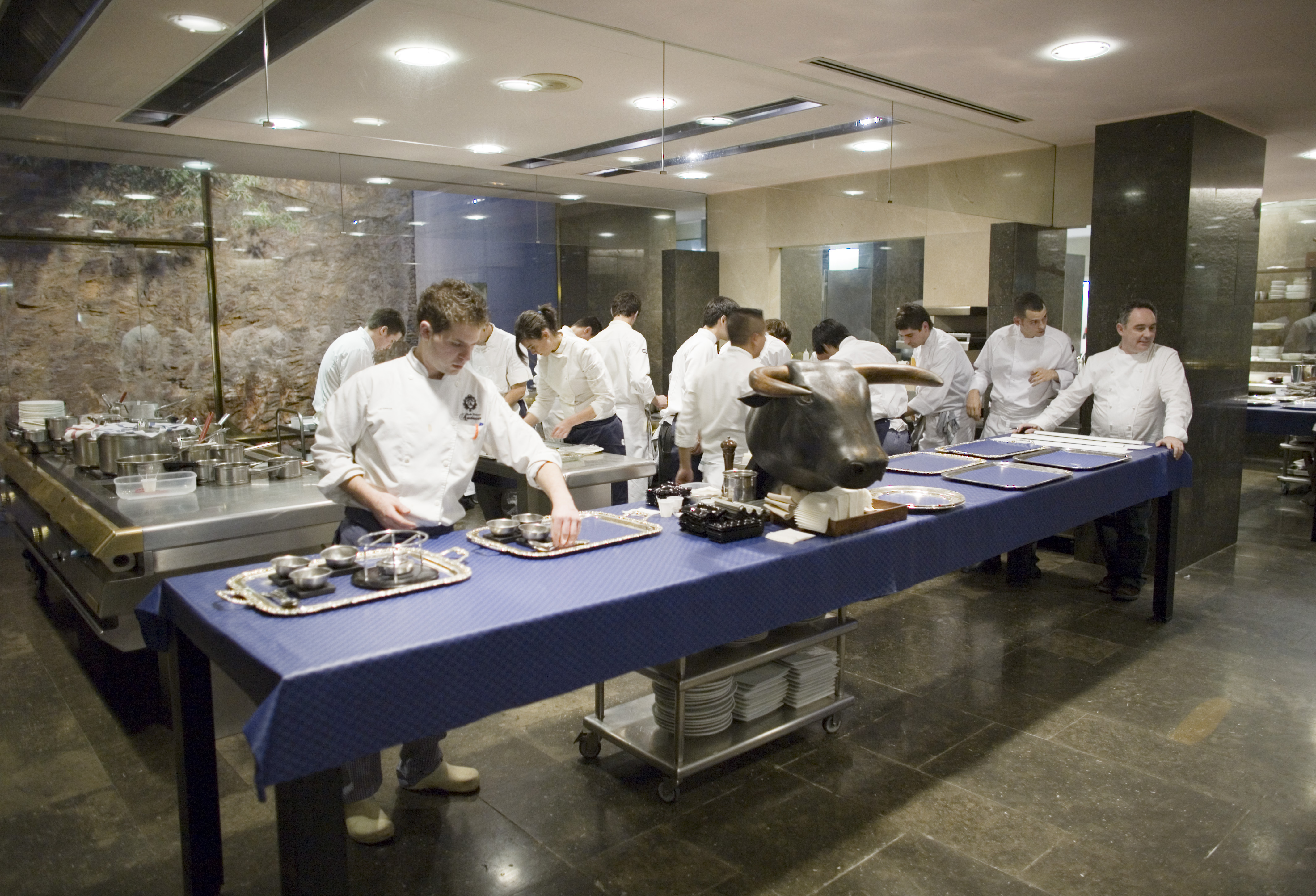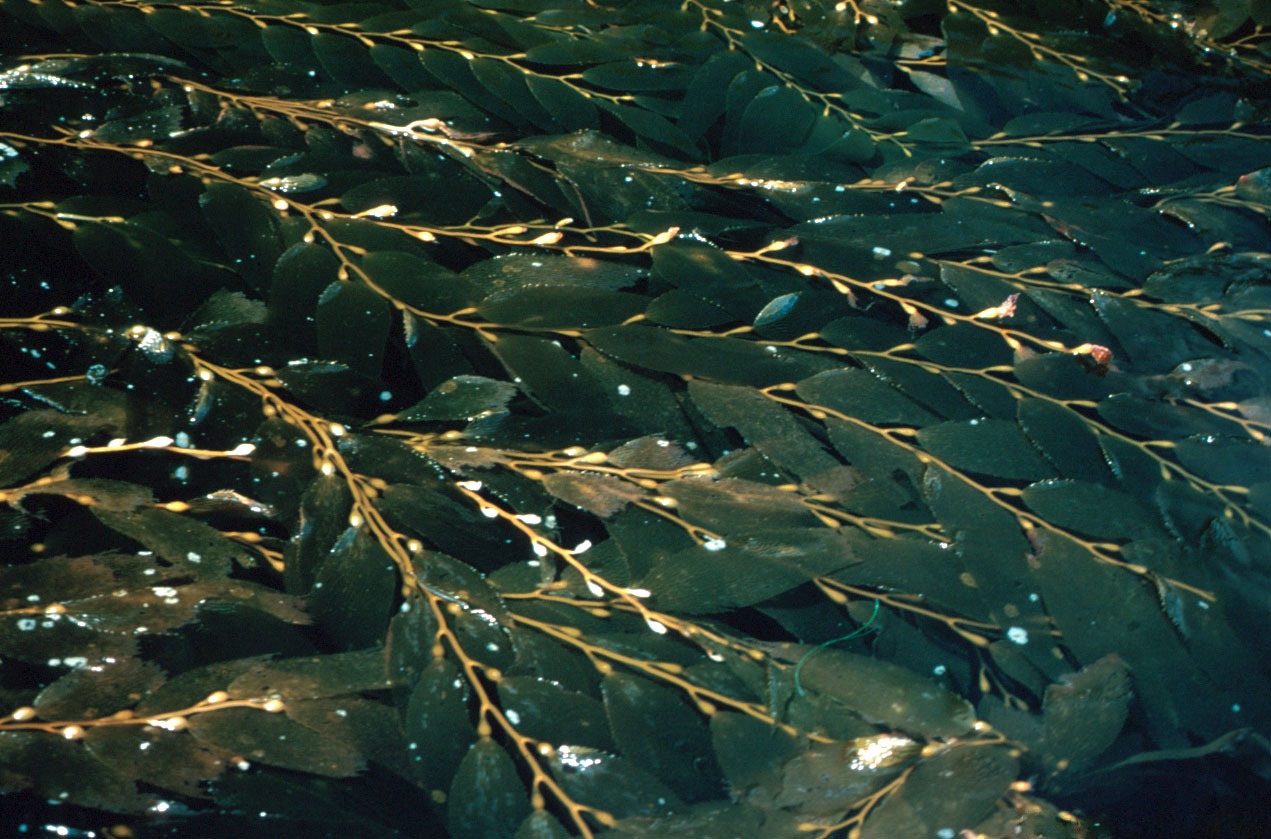|
Spherification
Spherification is a culinary process that employs sodium alginate and either calcium chloride or calcium glucate lactate to shape a liquid into squishy spheres, which visually and texturally resemble roe. The technique was documented by Unilever in the 1950sPotter, Jeff (2010). ''Cooking for Geeks: Real Science, Great Hacks, and Good Food'', page 305. O'Reilly Media, Inc. . and brought to the modernist cuisine by the creative team at El Bulli under the direction of chefs Ferran Adrià and Albert Adrià. Preparation There are two main methods for creating such spheres, which differ based on the calcium content of the liquid product to be spherified. Basic spherification For flavored liquids (such as fruit juices) containing no calcium, the liquid is thoroughly mixed with a small quantity of powdered sodium alginate, then dripped into a bowl filled with a cold solution of calcium chloride, or other soluble calcium salt. Just as a teaspoonful of water dropped into a bowl ... [...More Info...] [...Related Items...] OR: [Wikipedia] [Google] [Baidu] |
Reverse Spherification
Reverse spherification is a method of molecular gastronomy. This method is similar to spherification, different in that it is used to enclose liquid containing alcohol content, as well as liquid with calcium content such as milk and yogurt. When the liquid containing alcohol or calcium salt is dropped into an alginate bath, the liquid will draw itself into a spherical shape and becomes encapsulated by the gel-like membrane formed by the cross-linking of the calcium ions and the alginate polymer strands. Larger spheres can be created using reverse spherification. After removing the jelly from the alginate bath, calcium would not continue to diffuse into the center of the sphere, therefore would not create a gel center. Longer storage time could be obtained for this product accordingly. Both the liquid for consumption and the alginate bath should be left to stand after preparing to eliminate air bubbles. Air bubbles inside the liquid could result in the inability of the flavourful li ... [...More Info...] [...Related Items...] OR: [Wikipedia] [Google] [Baidu] |
Popping Boba
Popping boba, also called Popping Pearls, is a type of "boba" used in bubble tea. Unlike traditional boba, which is tapioca-based, popping boba is made using the spherification process that relies on the reaction of sodium alginate and either calcium chloride or calcium lactate. Popping boba has a thin, gel-like skin with juice inside that bursts when squeezed. The ingredients for popping boba generally consist of water, sugar, fruit juice or other flavors, and the ingredients required for spherification. In addition to being used in place of traditional boba in bubble tea, it is used in smoothies, slushies and as a topping for frozen yogurt Frozen yogurt (also known as frogurt or by the tradename Froyo; ) is a frozen dessert made with yogurt and sometimes other dairy and non-dairy products. Frozen yogurt is a frozen product containing the same basic ingredients as ice cream, but co .... Some popular flavors of popping boba include mango, passion fruit, strawberry, green tea, ... [...More Info...] [...Related Items...] OR: [Wikipedia] [Google] [Baidu] |
Calcium Lactate Gluconate
Calcium lactate gluconate, also known as GLOCAL, is a soluble salt of calcium, lactic acid and gluconic acid used in effervescent calcium tablets. Its chemical formula is Ca5(C3H5O3)6·(C6H11O7)4·2H2O. It was first developed by Sandoz, Switzerland. Calcium lactate gluconate is used in the functional and fortified food industry due to its good solubility and neutral taste. In addition, it is used in various spherification techniques in molecular gastronomy. It can also be used to help neutralize HF (hydrofluoric acid Hydrofluoric acid is a solution of hydrogen fluoride (HF) in water. Solutions of HF are colourless, acidic and highly corrosive. It is used to make most fluorine-containing compounds; examples include the commonly used pharmaceutical antidepr ...) poisoning. References Calcium compounds Lactates Gluconates E-number additives {{gastrointestinal-drug-stub ... [...More Info...] [...Related Items...] OR: [Wikipedia] [Google] [Baidu] |
Calcium Lactate
Calcium lactate is a white crystalline salt with formula , consisting of two lactate anions (CHOH) for each calcium cation . It forms several hydrates, the most common being the pentahydrate ·5. Calcium lactate is used in medicine, mainly to treat calcium deficiencies; and as a food additive with E number of E327. Some cheese crystals consist of calcium lactate. Properties The lactate ion is chiral, with two enantiomers, D (−,''R'') and L (+,''S''). The L isomer is the one normally synthesized and metabolized by living organisms, but some bacteria can produce the D form or convert the L to D. Thus calcium lactate also has D and L isomers, where all anions are of the same type. Some synthesis processes yield a mixture of the two in equal parts, resulting in the DL ( racemic) salt. Both the L and the DL forms occur as crystals on the surface of aging Cheddar cheese.G.F. Tansman, P.S. Kindstedt, J.M. Hughes (2014): "Powder X-ray diffraction can differentiate between enant ... [...More Info...] [...Related Items...] OR: [Wikipedia] [Google] [Baidu] |
Cooking Techniques
This is a list of cooking techniques commonly used in cooking and food preparation. Cooking is the art of preparing food for ingestion, commonly with the application of heat. Cooking techniques and ingredients vary widely across the world, reflecting unique environments, economics, cultural traditions, and trends. The way that cooking takes place also depends on the skill and type of training of an individual cook. A B C File:Fromagerie gruyères-égouttage-4.jpg, The production of Gruyère cheese at the cheesemaking factory of Gruyères, Canton of Fribourg, Switzerland File:Svadbarski Kupus.jpg, Cooking of Svadbarski Kupus (wedding cabbage) in clay pots, Serbia File:Coddled Egg on hash.jpg, A coddled egg atop hash File:Creaming butter - step 3.JPG, Butter being creamed using electric beaters D ... [...More Info...] [...Related Items...] OR: [Wikipedia] [Google] [Baidu] |
Calcium Chloride
Calcium chloride is an inorganic compound, a salt with the chemical formula . It is a white crystalline solid at room temperature, and it is highly soluble in water. It can be created by neutralising hydrochloric acid with calcium hydroxide. Calcium chloride is commonly encountered as a hydrated solid with generic formula , where ''n'' = 0, 1, 2, 4, and 6. These compounds are mainly used for de-icing and dust control. Because the anhydrous salt is hydroscopic and deliquescent, it is used as a desiccant.Robert Kemp, Suzanne E. Keegan "Calcium Chloride" in Ullmann's Encyclopedia of Industrial Chemistry 2000, Wiley-VCH, Weinheim. Uses De-icing and freezing-point depression By depressing the freezing point of water, calcium chloride is used to prevent ice formation and is used to de-ice. This application consumes the greatest amount of calcium chloride. Calcium chloride is relatively harmless to plants and soil. As a deicing agent, it is much more effective at lower temperat ... [...More Info...] [...Related Items...] OR: [Wikipedia] [Google] [Baidu] |
El Bulli
El Bulli () was a restaurant near the town of Roses, Catalonia, Spain, run by chef Ferran Adrià and driven by the culinary ideas of Albert Adrià. The restaurant overlooked Cala Montjoi, a bay on Catalonia's Costa Brava. It held three Michelin stars and was described in UK newspaper ''The Guardian'' as "the most imaginative generator of haute cuisine on the planet". The restaurant was also associated with molecular gastronomy. El Bulli closed on 30 July 2011 and was reopened as a creativity centre in 2014. Restaurant The restaurant had a limited season: the PIXA season, for example, ran from 15 June to 20 December. Bookings for the next year were taken on a single day after the closing of the current season. It accommodated only 8,000 diners a season, but got more than two million requests. The average cost of a meal was €250 (US$325). The restaurant itself had operated at a loss since 2000, with operating profit coming from El Bulli-related books and lectures by Adrià.Carli ... [...More Info...] [...Related Items...] OR: [Wikipedia] [Google] [Baidu] |
Ferran Adrià
Ferran Adrià i Acosta (; born 14 May 1962) is a Spanish chef. He was the head chef of the ''El Bulli'' restaurant in Roses, Girona, Roses on the Costa Brava and is considered one of the best chefs in the world. He has often collaborated with his brother, the renowned pastry chef Albert Adrià. Career Ferran Adrià began his culinary career in 1980 during his stint as a dishwasher at the Hotel Playafels, in the town of Castelldefels. The ''chef de cuisine'' at this hotel taught him traditional Spanish cuisine. At 19 he was drafted into military service where he worked as a cook. In 1984, at the age of 22, Adrià joined the kitchen staff of elBulli as a line cook. Eighteen months later he became the head chef. In 1994, Ferran Adrià and Juli Soler (his partner) sold 20% of their business to Miquel Horta (a Spanish millionaire and philanthropist and son of the founder of Nenuco) for 120 million Spanish peseta, pesetas. This event became a turning point for elBulli, the money was ... [...More Info...] [...Related Items...] OR: [Wikipedia] [Google] [Baidu] |
Albert Adrià
Albert Adrià i Acosta (; born 20 October 1969) is a Spanish chef. He is currently head chef of Tickets, a Michelin one-star restaurant in Barcelona and was formerly the head pastry chef of elBulli, in Roses on the Costa Brava. He was the lead of vanguard kitchen inspiring many chefs around the world and the main reason for elBulli's success . He has often collaborated with his brother, renowned chef Ferran Adrià. Biography Albert Adrià's interest in cuisine first began thanks to his parents, Ginés and Josefa, but it was his brother Ferran who inspired him to explore food as a career. In 1985, he left his studies to begin working at elBulli. After two years of apprenticeship, he started to focus his interest on pâtisserie. He completed his education in various pâtisseries alongside great pastry chefs such as Antoni Escribà and Francisco Torreblanca. In late 1998, he began working on a creativity workshop at the headquarters of Bullicatering. The Bullitaller consisted of a ... [...More Info...] [...Related Items...] OR: [Wikipedia] [Google] [Baidu] |
Sodium Alginate
Alginic acid, also called algin, is a naturally occurring, edible polysaccharide found in brown algae. It is hydrophilic and forms a viscous gum when hydrated. With metals such as sodium and calcium, its salts are known as alginates. Its colour ranges from white to yellowish-brown. It is sold in filamentous, granular, or powdered forms. It is a significant component of the biofilms produced by the bacterium ''Pseudomonas aeruginosa'', a major pathogen found in the lungs of some people who have cystic fibrosis. The biofilm and ''P. aeruginosa'' have a high resistance to antibiotics, but susceptible to inhibition by macrophages. Structure Alginic acid is a linear copolymer with homopolymeric blocks of (1→4)-linked β-D- mannuronate (M) and α-L- guluronate (G) residues, respectively, covalently linked together in different sequences or blocks. The monomers may appear in homopolymeric blocks of consecutive G-residues (G-blocks), consecutive M-residues (M-blocks) or alternatin ... [...More Info...] [...Related Items...] OR: [Wikipedia] [Google] [Baidu] |
Unilever
Unilever plc is a British multinational consumer goods company with headquarters in London, England. Unilever products include food, condiments, bottled water, baby food, soft drink, ice cream, instant coffee, cleaning agents, energy drink, toothpaste, pet food, pharmaceutical and consumer healthcare products, tea, breakfast cereals, beauty products, and personal care. Unilever is the largest producer of soap in the world and its products are available in around 190 countries. Unilever's largest brands include Lifebuoy, Dove, Sunsilk, Knorr, Lux, Sunlight, Rexona/Degree, Axe/Lynx, Ben & Jerry's, Omo/Persil, Heartbrand (Wall's) ice creams, Hellmann's and Magnum. Unilever is organised into three main divisions: Foods and Refreshments, Home Care, and Beauty & Personal Care. It has research and development facilities in China, India, the Netherlands, the United Kingdom, and the United States. Unilever was founded on 2 September 1929, by the merger of ... [...More Info...] [...Related Items...] OR: [Wikipedia] [Google] [Baidu] |








.jpg)